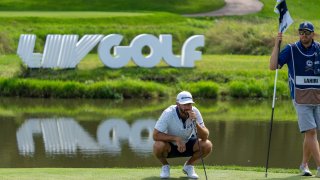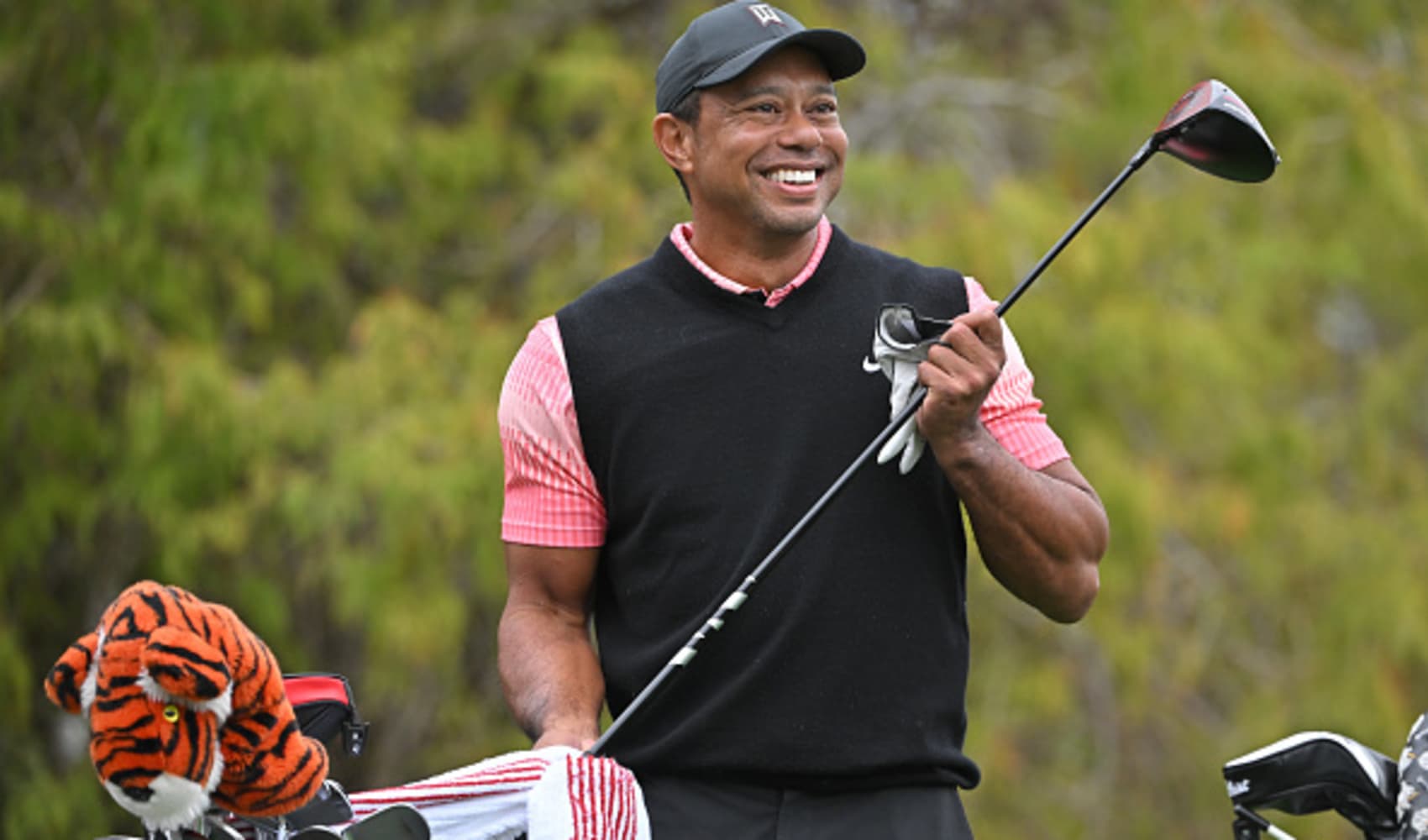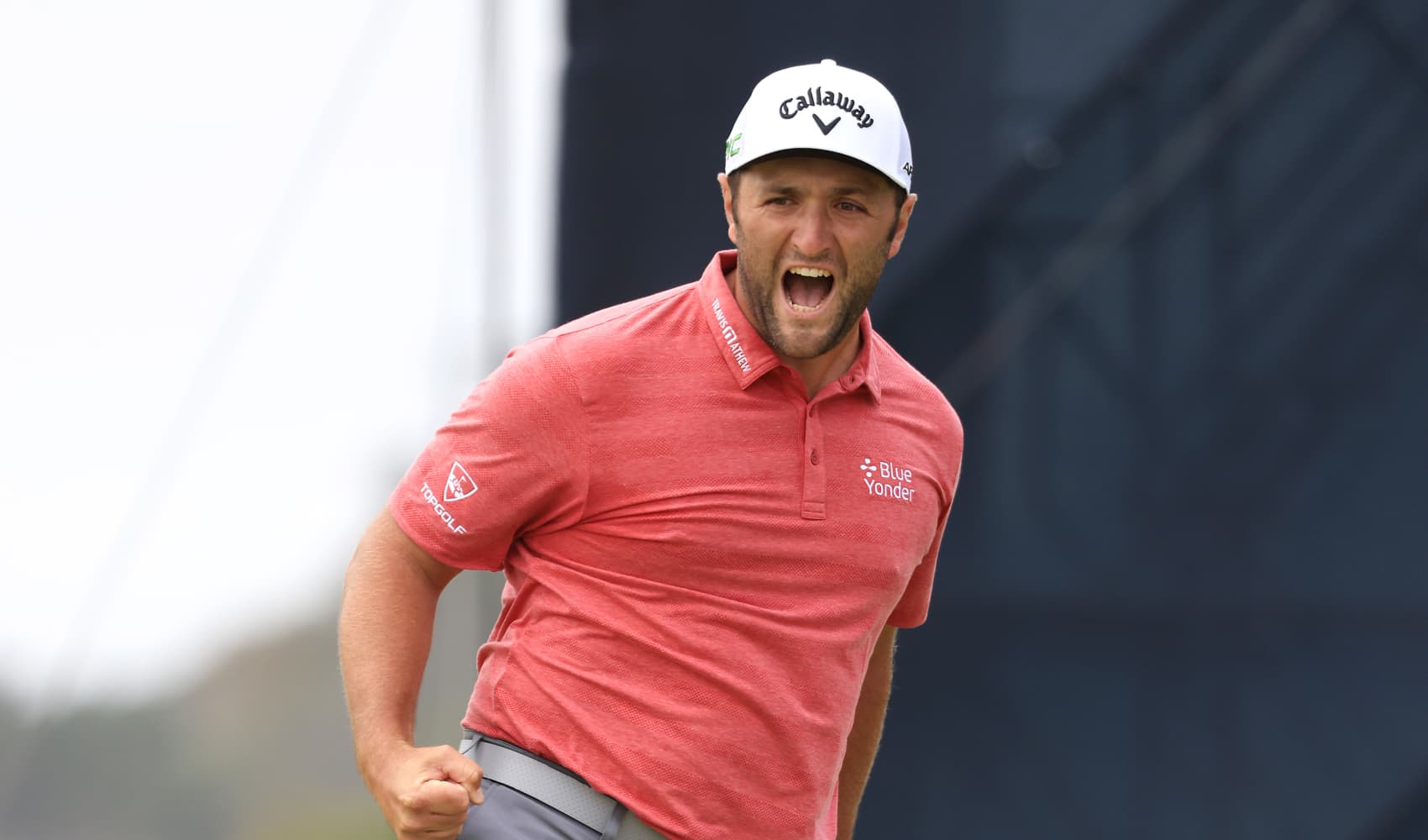
At the dawn of 2023, the specter of Saudi Arabia’s growing influence on pro golf — and sports in general — served not only as a moral conundrum for players and their fans, but also, some argued, as an existential threat to the multibillion-dollar professional-sports industry itself.
Twelve months later, it's a different conversation, now virtually devoid of concern about the supposed menace of “sportswashing” and the line between “right” and “wrong,” and more fixed on just how rich the Saudis might make all these athletes before they’re done investing.
Two major events sparked the change: The June 6 announcement that the PGA Tour was looking to go into business with the very Saudi group that was paying for the kingdom's LIV Golf, which the tour had labeled as a threat. Then, six months later, the decision by the world’s third-ranked player and an early resister of LIV, Jon Rahm, to move to that league for a contract reported in the neighborhood of $500 million.
Making less-dramatic but almost equally important headlines were the continuing talks between the Saudis and leaders in pro tennis — and Saudi Arabia’s ongoing push into global soccer, reflected most vividly by a decision that smoothed the way for the Saudis to host the sport’s biggest event, the World Cup, in 2034.
Get top local stories in DFW delivered to you every morning. Sign up for NBC DFW's News Headlines newsletter.
“You’re investing in sports, which is one of the few growth industries in the world,” Dan Durbin, director of the Institute of Sports, Media and Society at USC, said of the Saudi strategy. “It is, as far as we can see, an almost endless growth industry.”
The conversation over golf went front-and-center when Saudi Arabia’s Public Investment Fund, or PIF, the nation's sovereign wealth fund, was laying the groundwork for LIV in early 2022. Six-time major winner Phil Mickelson’s interview, in which he called the Saudis “scary (expletives)” — a reference, in part, to the murder of journalist Jamal Khashoggi — set the dividing line in what was viewed as a good vs. evil stare down between the status quo and the Saudi disrupters.
All but ignored in the debate was how ingrained Saudi Arabia is in virtually all parts of the world economy — the Saudis gain most of their influence by supplying around 15% of the world’s petroleum — and the inroads the kingdom was already making into sports.
One of soccer’s biggest stars, Cristiano Ronaldo, had joined a Saudi team backed by the same investment fund that supported LIV in a deal worth a reported $200 million a year. The Saudis made a reported $500 million-a-year play to recruit another soccer icon, Lionel Messi, to its upstart domestic league. (Messi turned them down.) The PIF wealth fund owns the Premier League’s Newcastle soccer club.
As the calendar turns to 2024, there’s no sign of this slowing. The Saudis host a Formula One auto race that has come under scrutiny and had reportedly been considering buying the entire league from Liberty Media Corporation — a deal that didn't take off because Liberty didn't want to sell. They are looking to invest some $5 billion into cricket’s Indian Premier League with an eye on expanding it into other countries.
The ATP, which runs men’s professional tennis, has a five-year deal to hold one of its biggest events in the Saudi port city of Jeddah. Talks between the Saudis and the women’s tour are reportedly ongoing. In a sign of how the conversation has shifted, Billie Jean King, who began the fight for equal pay for women in sports in the 1970s, has said bringing the sport to the kingdom might not be all bad despite its long record of repressing women's rights.
“I don’t think you really change unless you engage,” she said earlier this year.
Durbin sees the kingdom’s embrace of sports as a move for Saudi Arabia to be viewed as more than an oil-producing kingdom with a bad human-rights record. Some might call that the quintessential definition of “sportswashing.”
“For decades, sports has been the center of soft diplomacy,” he said. “You try to create a positive response and feeling about your ethics because you’re holding to the rules of sports.”
The end of 2023, and all of 2024, figure to be dominated by the results of months-long negotiations between the PGA Tour and the Saudi investment fund, which will ultimately determine the fate of LIV.
Rahm’s move could be seen as a preemptive gamble based on acknowledgment of the reality that golf will eventually come together again (and if that turns out to be the case, there’s nothing wrong with having an extra $500 million in the bank when it does).
One of the Spaniard's biggest worries about moving was that he might get excluded from the Ryder Cup. Golf’s prestigious team event — which pits the best from the U.S. against the best from Europe and where none of the players are paid to play — was considered more-or-less off limits to those who defected to LIV, especially on the European side.
Now, even LIV’s biggest detractor at the outset, four-time major champion Rory McIlroy, has suggested the Ryder Cup gatekeepers consider easing their stance against LIV players competing for Europe.
His take on Rahm: “You can’t judge someone for making a decision that they feel is the best for them,” he told Sky Sports earlier this month. “Is it disappointing to me? Yes. But the landscape of golf changed on June 6.”
In a telling sign of the impact Saudi Arabia's entrance into the golf scene has made, the top 10 players on the PGA Tour combined made $86.6 million in prize money in the season that ended in 2022; in 2023, that number rose to $124.1 million. Meanwhile, the top 10 on the LIV Tour made $159.4 million in 2023.
It helps explain why, in 2024, the debate in golf and the rest of the sports world doesn't figure to center on whether all this change has been a good thing — but rather, on how big a piece of the sports universe the Saudi kingdom can buy.
“What you find is that when you’re lining your pocket with some of that money, then it can’t be ‘dirty’ money anymore,” Durbin said.



